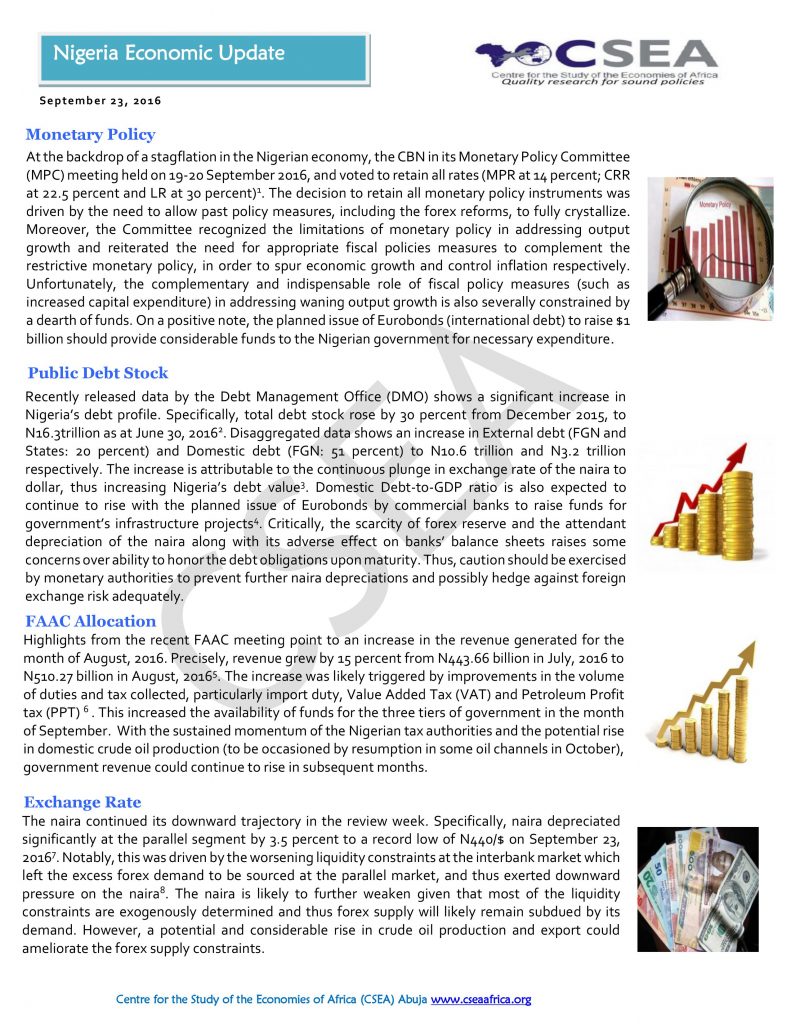Macroeconomic Report & Economic Updates

October 4, 2016
Nigeria Economic Update (Issue 41)
The
naira continued its downward trajectory in the review week. Specifically, naira
depreciated significantly at the parallel segment by 3.5 percent to a record
low of N440/$ on September 23, 2016. Notably, this was driven by
the worsening liquidity constraints at the interbank market which left the
excess forex demand to be sourced at the parallel market, and thus exerted
downward pressure on the naira. The naira is likely to further
weaken given that most of the liquidity constraints are exogenously determined
and thus forex supply will likely remain subdued by its demand.
Related
Capital Importation And Budgetary Allocation
Capital Importation: Foreign investment into the agricultural sector was relatively flat between 2007 and 2012 but gained unusual momentum in September 2015. The spike in 2015 is likely driven by the
Nigeria Economic Update (Issue 29)
Global oil price edged upwards in the review week. International crude benchmark, Brent, rose week-on-week by 3.1 percent to $50 per barrel as at July 21, 20173 a level it had not attained since June. The remarkable gains followed demand-side progress earlier statistics from China showed increase in crude imports, indicating prospects of higher demand. This was also complimented by the huge drop in US domestic crude production (Crude reserves fell by 4.7 million barrels). If the trend is sustained, Nigeria could record further rise in its Gross Federally Collected Revenue. Nevertheless, there remains a need for Nigeria to overcome the challenge of harnessing its oil and gas resources by making strategic policy choices andensuring coordination in policy implementation to minimize macroeconomic distortions.
